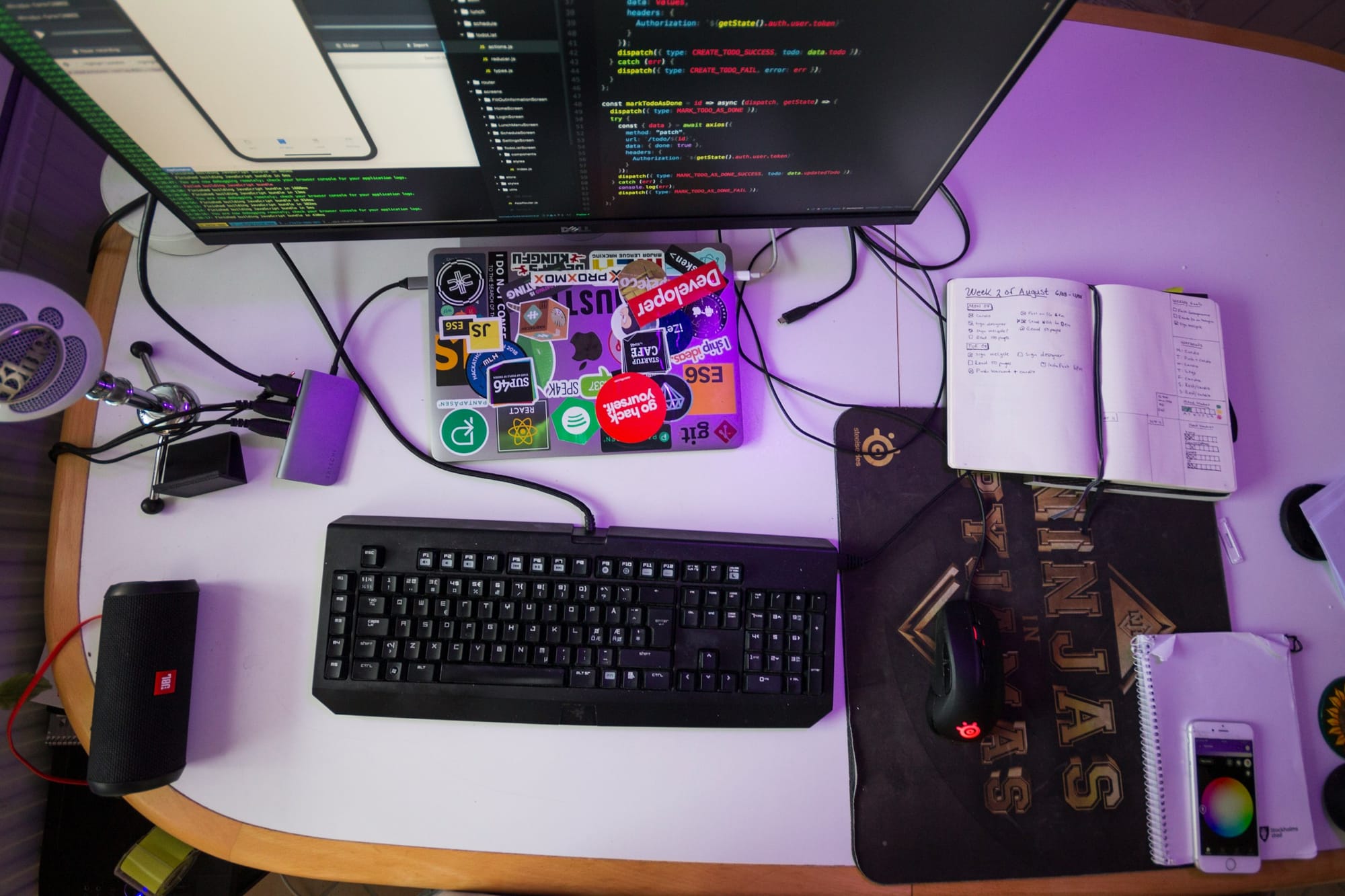Have you noticed how popular AI apps have become? From enhancing creativity to improving productivity, they're transforming how users interact with technology. As a developer, integrating AI into your apps can boost functionality and innovation, helping you create a smoother user experience. However, introducing AI into existing app structures can be challenging. This post will explore how to tackle these challenges and successfully integrate generative AI into your app to enhance functionality, innovation, and user experience without adding unnecessary complexity or overhead.
Lamatic's generative AI tech stack helps app developers like you enhance functionality, creativity, and user experience by building AI tools into apps without the hassle. Instead of reinventing the wheel and creating complex structures to accommodate artificial intelligence, you can use Lamatic's solution to simplify the integration process.
What is AI App Development?

AI app development is the process of creating apps empowered with AI capabilities. In other words, it’s the process of adding AI models to an app during development. AI models are already used in many apps like:
- Netflix
- Spotify
- YouTube
All of these apps rely on AI models in one way or another. And there’s a good reason for that. The AI models in these apps allow them to deliver a better user experience (UX). UX should also be your focus when developing an AI app. That’s because, for every dollar invested in UX, you get $100 in return–an ROI of 9,900%.
The Power of AI: Enhancing Adaptability and User-Centric Growth
And AI is a worthwhile investment to improve your app’s UX. But that’s not the only reason you should consider developing an AI app. Another significant advantage of AI apps is their adaptability. The AI model in your app can learn from user interactions and make decisions based on patterns it recognizes. That means it can continually evolve and improve without human intervention.
Benefits of AI App Development
Now that we’ve defined it, let’s discuss some specific benefits of AI app development. They are:
- Enhanced personalization
- Increased efficiency
- Improved security
Enhanced personalization
Developing an AI app is one of the best ways to improve your app’s personalization. And personalization is a must in today’s market. The stats back that up. According to a report by Twilio Segment, 92% of companies are already using AI personalization to drive business growth. Your customers want personalization, too. 65% of customers will stop using a product if their experience isn’t personalized.
AI-Driven Personalization: The Key to User Engagement and Market Leadership
That number has risen to 75% among Gen Z customers. These stats show just how vital personalization is for your app’s success. And AI can help you deliver a tailored experience to each user. A good example of this is Netflix’s recommendation system. Netflix uses AI to fine-tune each user’s recommendations–and it works.
80% of what Netflix users watch comes from their recommendation system. That’s one of the reasons why they’re still market leaders in an increasingly competitive industry. You can also use AI personalization to stand out from the crowd.
Increased Efficiency
One of the main benefits of AI is increasing the efficiency of your app and your development process. McKinsey estimates that automating processes with AI, on average, reduces business costs by 30% within 5 years. AI improves the efficiency of the app you’re developing, too. This is especially true if your app is based on data entry. Intuit’s TurboTax is a good example.
Boosting Efficiency with AI: Streamlined Processes and Faster Development
They integrated AI into their app with the “Express Lane” feature. It allowed their users to file their taxes in under 10 minutes–much quicker than the IRS estimate of 13 hours. But that’s not the only way AI can increase your efficiency. You can also speed up your app’s development with coding assistants like Github Copilot and Tabnine.
These tools can help your engineers by writing boilerplate code and automating other routine tasks. This will allow them to focus on solving more complex tasks and increase their productivity. And that’s barely scratching the surface. In short, AI can improve the efficiency of both your app and your processes. And that’s a good reason to embrace it.
Improved security
There’s no such thing as a 100% secure system. Gene Spafford, computer security expert, once said: “The only truly secure system is one that is powered off, cast in a block of concrete and sealed in a lead-lined room with armed guards.” Still, AI can significantly improve your app’s security. Let’s say you’re building a fintech app. You can use AI for fraud detection and prevention. AI can analyze vast amounts of data and spot suspicious transactions and patterns. Another good example of how AI can improve security is Gmail’s spam filters.
They built an AI-powered spam filter that blocks 99.9% of unwanted emails, including Spam Phishing Malware. These are just a few ways AI can improve your security. Enhancing your security is especially important as cybercrime will surge in the coming years. Globally, the cost of cybercrime is predicted to rise from $8.44 trillion in 2022 to $23.82 trillion in 2027. That’s why investing in improving your security is an absolute must. And AI can help you take it to the next level.
Related Reading
- Fine Tuning AI Models
- Artificial Intelligence in Web Applications
- How to Integrate AI Into an App
- AI API Integration
- How to Fine Tune GPT
- How to Use AI in an App
- How to Integrate ChatGPT Into an App
- How to Integrate AI Into Smart Home Application
How to Build a Robust Tech Stack for AI App Development

Selecting the right tools, frameworks, and platforms for AI app development. The tech stack forms the foundation of the application and directly impacts its performance and scalability. The wrong choice can hinder growth and lead to an application failing to meet business goals or user expectations.
Key Components of an AI App Development Tech Stack
There is no universally applicable technology stack. Thus, our guide chooses the relevant technology by considering the project’s requirements and best practices. Some of the most important components are as follows.
Programming Languages
- Python: Ideal for beginners and powerful for data analysis, Python offers numerous libraries for handling and classifying large datasets, making it a top choice for AI projects.
- Java: Widely used due to its ease of debugging and multi-platform capabilities, Java is prevalent in mobile app development, including AI-based applications.
- C++: Known for its speed and efficiency, C++ is beneficial for complex AI applications where quick code execution is crucial. Its complexity can make coding more challenging.
- Other languages like C#, R, Lisp, and Prolog are also used depending on the project’s needs.
AI Platforms
- Google TensorFlow: Provides a flexible architecture for numerical computation and AI project development.
- Microsoft Azure: Offers a wide range of algorithms and tools for predictive modeling, recommendations, and natural language processing.
- Amazon AWS: Known for its scalable and flexible ML technology, helpful in creating and deploying complex AI models.
- Other notable platforms include:
- IBM Watson
- Oracle AI
- Mendix
- H2O
- Wit.ai
Frameworks and Application Programming Interfaces (APIs)
- Microsoft Cognitive Toolkit (CNTK): Facilitates the creation of various ML models and the processing of unstructured data.
- AWS Machine Learning: Helps develop complex applications with high performance and connects to cloud services.
- PyTorch: Provides flexibility and efficiency for building deep neural networks.
- Core ML/Create ML: Tailored for AI products on Apple devices.
- Caffe2: Builds modular deep-learning environments for experimentation with different models.
- Other frameworks include:
- Keras
- Accord.NET
- Scikit-learn
- SparkMLlib
We also use Azure Text Analytics API, Microsoft Face API, Google Vision API, and Apple SiriKit to streamline development.
Related Reading
- List of Generative AI Tools
- Create Your Own AI Application
- Generative AI Applications
- How to Build AI Software
- ChatGPT Integration Services
- Custom ChatGPT Integration Services
- AI Integration Services
- Best Generative AI API
- AI Integration Strategies
- AI Integration Tools
- Best AI APIs
- Benefits of APIs
Step-By-Step AI App Development Process

Picking the Best AI Tools for App Development
The first step when developing an AI app is choosing the right AI tools and frameworks. Your app's success depends on it. Cloud-based AI platforms are the best choice if you and your team are new to AI app development. The most popular platforms are:
- Google Cloud AI
- Amazon Sagemaker
- Azure Machine Learning
Choosing the Right Tools: Platforms vs. Frameworks in AI App Development
All of these are end-to-end platforms, which means you can use them to:
- Build AI models
- Train AI models
- Deploy AI models
Their main advantage is that they make AI app development more straightforward and quicker. They also offer pre-trained AI models you can easily integrate into your app. But, if you need a more complex AI model for specific use cases, AI frameworks are the better option. Some of the most popular AI frameworks are:
- TensorFlow
- PyTorch
- Google AutoML
- Scikit-learn
The framework you choose will depend on your specific business needs. For example, Google AutoML is a good choice for beginners, while TensorFlow is more suited to complex projects.
Data Collection and Preparation for AI App Development
Without high-quality data, the AI model in your app won’t work well. Insufficient data can cost you. IBM estimates the yearly cost of adequate data is $3.1 trillion in the U.S. alone. That’s why data quality is so important. But first, you need to choose which datasets you’ll use to train your AI model. Let’s say you’re training an image recognition model. You can use publicly available datasets such as:
- ImageNet
- CIFAR-10
- ObjectNet
From Raw Data to AI-Ready: Preprocessing and Wrangling for Model Training
If you need more specific datasets, you can find them on:
- AWS Data Exchange
- Kaggle
- Google Dataset Search
Once you have your datasets ready, you must prepare them for use. That means you need to preprocess and wrangle your data. Data preprocessing: In simple terms, data preprocessing is about improving the quality of your data. You can use tools like Altair and OpenRefine to do that task. You need to wrangle your data. This means you must turn raw data into a usable format for your AI model. Once you’ve done that, you can start training your AI model.
Designing and Training Your AI Model
The AI model is the heart of your AI app. That’s why you need to design and train it properly. So, how do you do that? For starters, you need to create your AI model’s architecture. Some of the most common architectures are:
- Convolutional neural networks (CNN)
- Recurrent neural networks (RNN)
- Generative adversarial networks (GAN)
Each has specific use cases, and your choice will depend on your business needs. For example, you can use:
- CNNs for recommendation systems
- RNNs for speech recognition
- GANs for image generation
Choosing the Right AI Training Method: Supervised, Unsupervised, or Reinforcement Learning
You also need to think about your AI model training approach. The three most common methods are:
- Supervised learning
- Unsupervised learning
- Reinforcement learning
Again, your choice of training approach will depend on your business needs. For example, unsupervised learning is better for fraud detection models than supervised learning for image recognition. Once you’ve decided on your model’s architecture and training approach, you can start training the model. Simply put, this means feeding the data you’ve prepared into the model. After you’ve trained the model, you can begin integrating it into your app.
Integrating the AI Model into Your App
Integrating the AI model is the sink-or-swim moment for your AI app. That’s why you need to get it spot on. In essence, you must answer two main questions:
- Where will you integrate the app?
- How will the AI model process data?
But what exactly do we mean by that? Let’s start with how the model processes data. Your choice will come down to processing data on the cloud or the device. Cloud computing vs edge computing source: Cardinal Peak On-device processing, or edge AI, is helpful if you’re developing an AI Internet of Things (IoT) app.
Front-End vs. Back-End Integration: Optimizing AI Model Deployment for Performance
But, cloud-based data processing is the more common approach. You’ll also need to decide where to integrate your AI model – in your app’s front-end or back-end. You’ll most likely integrate it into your app’s user-facing front-end. Incorporating it into your app’s back-end is a good option if you need improved accuracy. Once you’ve answered these questions, you can integrate and deploy your AI model.
Best Tips for AI App Development
To round things off, let’s cover some of the best tips for AI app development.
They are:
- Set clear goals
- Plan for scalability
- Implement continuous learning
Set Clear Goals
If you want the AI app you’re developing to be successful, you first need to set clear goals you want to achieve. And that means your AI should solve a problem for your users. With AI’s incredible hype, adding AI to your app and asking questions later is tempting. But, if you do that, you risk failure. That’s why you must be clear about how AI can help your users and improve their experience.
Let’s say you want to add a customer service AI chatbot to your app. You need a clear idea of how it can help your users. Sephora’s chatbot is a good example. Sephora chatbot helps users pick out products and book in-store appointments. And the result? The chatbot has an 11% higher conversion rate than other channels. That’s because Sephora set clear goals they wanted to achieve with it. And you should do the same for your AI app, too.
Plan For Scalability
When you’re developing an AI app, planning for scalability is essential. And that’s for a good reason. Scaling up is one of companies’ most significant challenges when adopting AI and machine learning models. IBM’s 2022 Global AI Adoption Index confirms that, too. It lists scalability as one of the top 5 challenges holding AI adoption back. But what exactly do we mean by planning for scalability?
Ensuring Scalable Infrastructure for AI App Development
To start, your infrastructure should support your AI app’s growth. AI models work by processing and analyzing vast amounts of data. And that can eat up a lot of resources. That’s why you must ensure your infrastructure can handle that before developing an AI app. Another way you can plan for scalability is by making your AI model modular.
This way, you can upgrade individual components when necessary without disrupting the entire system. Also, the cloud-based AI platforms we’ve discussed can help you scale your AI solutions as they can more easily handle large spikes in demand. In short, planning for scalability from the start will help your app more easily grow and evolve. And that will help make it a success.
Implement Continuous Learning
The world of AI app development is constantly evolving. If your app doesn’t keep up, your competitors will leave you in the dust. And that’s why continuous learning is so important. With it, your app and your AI model will continuously improve. A great example of this is Grammarly. Grammarly uses AI to check users’ writing for grammar and style errors.
Implementing Continuous Learning and Feedback Loops in AI Apps
At the same time, their AI learns from the vast amount of text it processes to improve the suggestions it gives. And that’s how it continuously improves its output. But how can you implement continuous learning in your AI app? Adding a feedback loop for your AI model is a good place to start. Your users should be able to leave feedback on your AI model’s outputs. That way, it can learn from that feedback and become more reliable.
This is especially useful for generative AI models like chatbots or image generators. Also, ensure you retrain your AI model with fresh data to prevent it from drifting. This will keep your model accurate and relevant. And that’s how you’ll get the most value from your AI app.
How To Choose The Top AI App Developers?
Building an AI app is tough, and it can feel overwhelming with all the other tasks. Fret not. Several top AI app developers, both freelance and full-time, are available to hire. They can help you create a high-quality app that will drive installs.
But before you choose an AI app developer (or AI software solution), here are some things you must consider for the best chance of success.
Machine Learning
Machine learning algorithms learn how to perform specific tasks; they generalize from examples. Put simply, the algorithm finds a way to solve a problem without clear instructions–it makes predictions based on available data.
Voice Assistant Development
Voice assistant technology has been a game-changer for mobile app development. Developers can now incorporate voice recognition and natural language processing into their apps to create a more seamless and user-friendly experience.
By using the power of voice assistant development, developers can create mobile apps that are smart and intuitive.
Natural Language Processing
With the help of voice assistant technology, mobile app developers have been able to incorporate natural language processing into their apps.
Mobile apps can use natural language processing to understand and respond to user requests more humanistically.
Deep Learning
Deep learning is similar to machine learning. It uses a certain model: neural networks based on the brain’s structure.
With the help of AI-powered assistants, developers can use deep learning algorithms to create mobile apps that learn from user behavior, making them more personalized and responsive.
Custom AI Tools and Software
These AI tools can help businesses create more intelligent and personalized user experiences. By using custom AI tools and software, developers can build smarter and more effective apps that can adapt to user behavior and preferences, provide recommendations, and deliver real-time insights and analytics. This includes using 3D visualizations and fusions to aid development.
RPA (Robotic Process Automation)
RPA (Robotic Process Automation) improves app development processes by automating repetitive tasks. It streamlines workflows and increases efficiency during development.
RPA can be integrated with other AI tools (and software) to create more powerful brand solutions.
Related Reading
- Filestack Alternatives
- Amazon Lex Alternatives
- DeepBrain AI Alternatives
- Clarifai Alternatives
- Wit.ai Alternatives
- DeepAI Alternatives
- Anthropic API vs OpenAI API
- Anthropic API vs Claude
Start Building GenAI Apps for Free Today with Our Managed Generative AI Tech Stack
Lamatic provides a managed generative AI tech stack that helps businesses rapidly integrate GenAI into products and applications. Their solution, which automates AI app development, includes:
- Managed GenAI middleware
- A custom GenAI API
- A low-code agent builder
- Automated GenAI workflows
- GenOps (DevOps for GenAI)
- Edge deployment via Cloudflare
- An integrated vector database.
Using Lamatic’s tech stack, development teams can quickly build AI applications—no technical debt required.
GenAI Workflow Automation
GenAI app development requires custom workflows to manage unique data structures, file types, and performance metrics. Lamatic’s tech stack automates these workflows to help teams avoid getting bogged down during development. By creating production-grade applications without manual processes or technical debt, Lamatic makes it easy to build and deploy GenAI apps quickly.
GenAI Deployment on the Edge
Lamatic’s tech stack enables edge deployment of generative AI applications via Cloudflare. When a user interacts with a Lamatic-developed GenAI application, the response is delivered from a server close to their physical location. Edge deployment reduces latency and makes AI applications faster and more efficient, improving the overall user experience.





